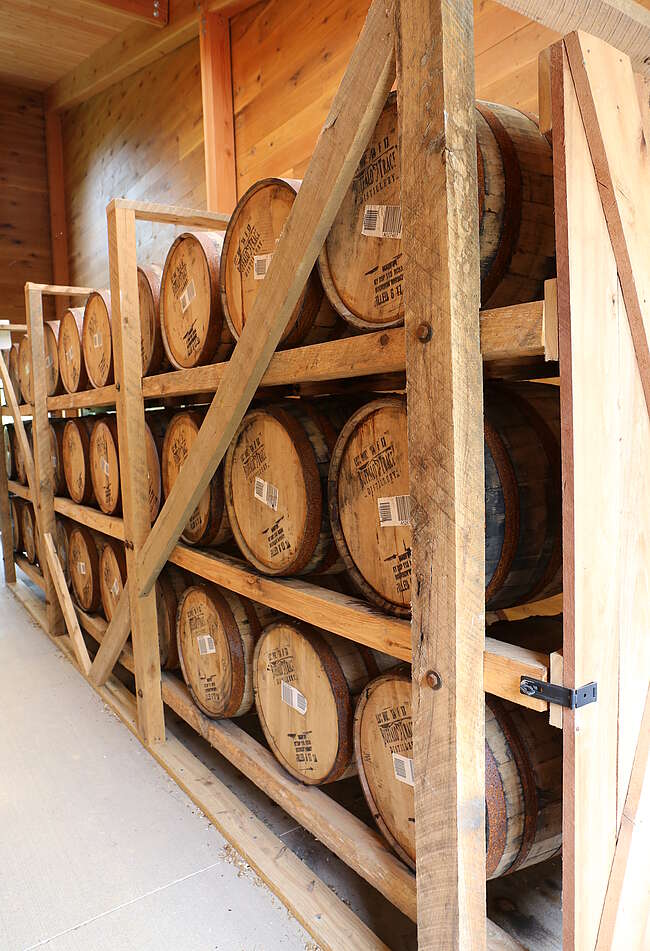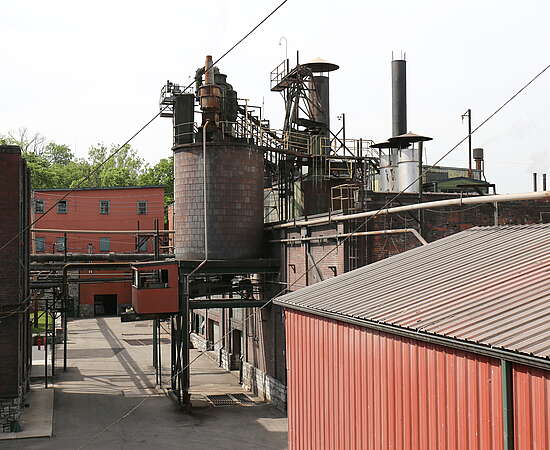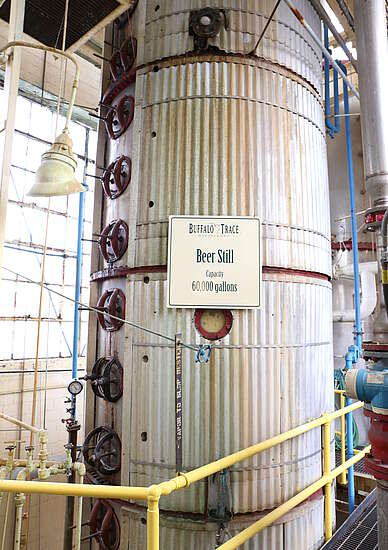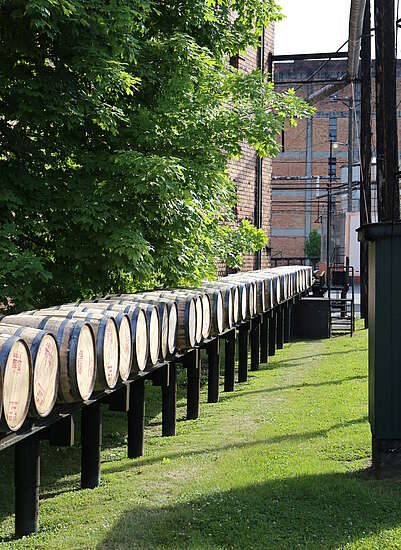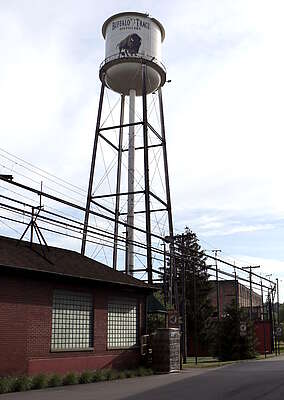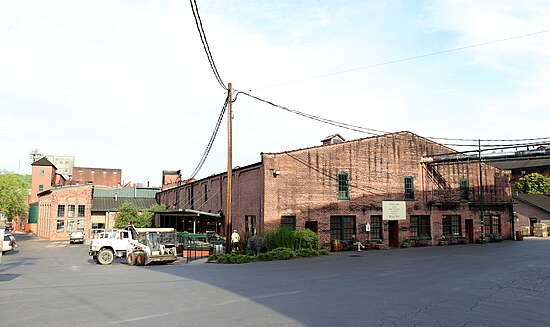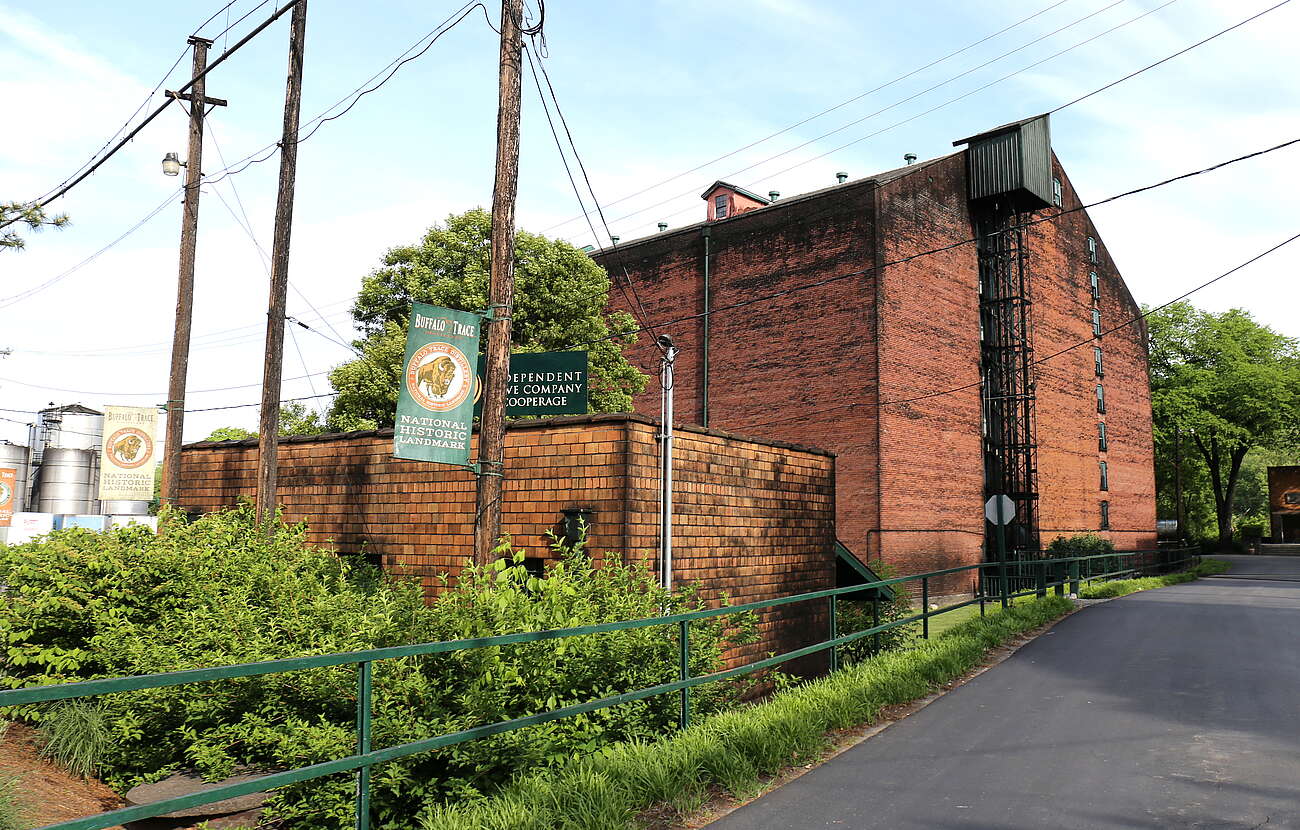
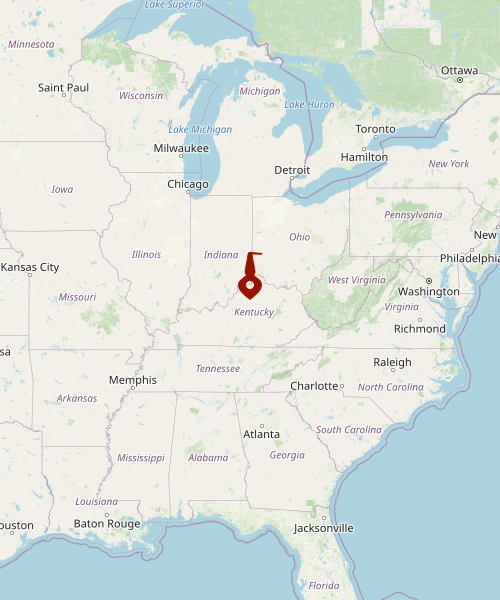
Buffalo Trace
The distillery was founded in 1858 and had many names over the time. It was called Leetown, Ancient Age and now Buffalo Trace. Read more about it below.↓
Details about the Distillery
Many Whisky distilleries proudly present their different awards and claim to hold one title or another. Buffalo Trace in Frankfort, Kentucky, scores them all off being the "world's most award-winning distillery". Worlds Whisky of the Year or Distiller of the Year, Whisky Magazine, Malt Whisky Advocate Magazine or Icons of Whisky - no one is surprised to read the name "Buffalo Trace" on the list of winners. And the distillery even topped it in 2013 when Buffalo Trace Distillery became National Historic Landmark - what an honor and a proof of the distillery's historical importance. It's a history of 200 years of innovation and tradition - a combination that does very well as the success of Buffalo Trace testifies.
The Whiskey
The Buffalo Trace Distillery is the home of many famous Whiskey labels: Buffalo Trace, Blanton’s Single Barrel, George T. Stagg, Sazerac Rye, W.L. Weller, Ancient Age, Antique Collection, Stagg Jr., Van Winkle, Eagle Rare and others more are produced here in Frankfort, the heart and capital of Kentucky.
There are three basically different mash recipes used here at Buffalo Trace to create three different kinds of Whiskey:
Rye Bourbon probably makes up about 95% of all Bourbons that are produced. Here rye is the second most important grain next to corn. The distillery is very proud of its small batch Bourbon Buffalo Trace that is usually bottled at an age of 8 years and 90 proof (45% ABV). It’s a very well balanced Whiskey with the sweetness of the corn and the spiciness of the rye matching together perfectly. Buffalo Trace Distillery uses two different mash bills for their rye bourbons and varies the amount of corn and rye, of course in both cases with corn as the majority. A small amount of malted barley is also part of the mash bill.
Wheat bourbon replaces the rye with wheat which makes them much smoother and sweeter. The W.L.Weller was a kind of a pioneer regarding wheat bourbons. Being bottled after 7 years of maturation at 90 proof (45% ABV). W.L.Weller brings up aromas of caramel, honey, butterscotch and some wood.
Straight rye whiskey is the third category of whiskey Buffalo Trace produces. Sazerac Straight Rye is their most famous rye whiskey label, dating back to the great days of New Orleans in the 1800s. Nowadays it’s not less famous and of very high quality: In 2015 it was awarded gold at the International Wine & Spirits Competition and Double Gold at the San Francisco World Spirits Competition. Maturation of the Sazerac Straight Rye Whiskey takes about 6 to 7 years and leads to a whiskey full of spiciness with aromas of clove, vanilla, pepper, citrus and licorice at 90 proof (45% ABV).
The Production
Buffalo Trace Distillery is a historic place where Whiskey production has taken place for over 200 years. Names, owners and labels that have been produced changed but the intention to make high quality Whiskey stayed down to the present day. Renovated when the Goldring family overtook the distillery in 1999 and integrated it into their Sazerac Company it is a modern and high productive distillery.
The Mashing
After mashing the grain with the water it is cooked under high pressure at about 240°F (115°C). Corn and rye are cooked separately before they are combined. Then malted barley is added. There’s a big Mash Cooker with a capacity of 10.100 gallons at Buffalo Trace Distillery and they also use small cookers for their small batches as for the Blanton’s.
The Fermentation
The 12 fermenters of Buffalo Trace are the biggest in the Whiskey industry and can enclose 92.000 gallons of mash each. Buffalo Trace ferments by a sour mash process so the cooked sweet mash is combined with parts of the old mash here in the fermenters. A ventilation system makes sure that co2 is taken out of the room.
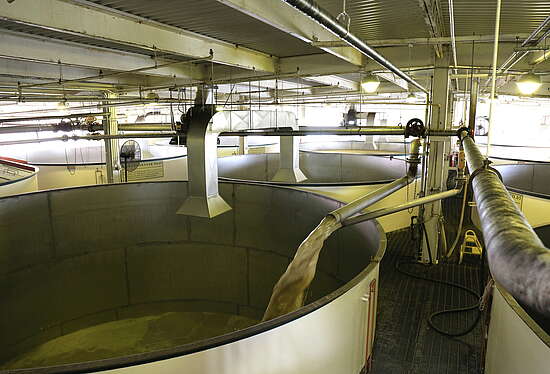
The Distillation
The still house of Buffalo Trace is four stories high. A high column such as this one here, having a capacity of 60.000 gallons, leads to a very high distilled und pure spirit. In two tail houses the spirits of column still and doubler are controlled. After the distillation through 8 layers the white dog has 148 proof (74% ABV). The leftovers (heads and tails) are used for the sour mash and cattle feed.
Warehouses and Bottling Hall
In the storage tanks the white dog is diluted down to 125 proof (62.5% ABV) before it is filled into the barrels. The barrels are marked by printing the details of the distillation on it and then taken to the warehouses to be stored. A system of rails spreads over the whole campus to transport the barrels. Buffalo Trace has a variety of warehouses. Some of them are used for experiments to find out the influence of different storage conditions, for example the light.
After being carefully selected and having passed the quality lab the Whiskey is bottled in the bottling hall. High technology meets handcrafting - some Whiskeys are automatically bottled, the Blanton’s Single Barrel in a little bottling station for 6 bottles at the same time. Labels for this one are written by hand and are hand labeled.
In July 2015 Buffalo Trace invested $20 million in a new robotic Storehouse. Tradition meets future here at Buffalo Trace.
The History
Buffalo Trace Distillery was founded in 1869 by E.H.Taylor jr., but distilling here at this place goes back to the late 1700s. Taylor named the distillery Old Fire Copper (O.F.C.). Eight years later he sold it to George T. Stagg who soon purchased additional land and begun expansions. Whiskey market was booming and Stagg built new warehouses. After a lightning stroke the distillery it burnt down and was rebuilt immediately. Buffalo Trace was the first distillery to install a steam heating for climate control in the warehouses in 1886. Colonel Albert Blanton became president of the distillery meanwhile called George T. Stack Distillery, led it through the beginning of the 20th century and kept it working throughout the prohibition for medical purposes. 1952 the distillery was named Blanton’s Distillery to honor him. Elmer T. Lee joined the distillery in 1949 and became manager in 1968. An investor group purchased the distillery in 1982, but in 1992 it became family owned again and was bought by the Goldring family, owners of the Sazerac Company.
Visitor Center
Visiting Buffalo Trace Distillery and joining a standard tour (Trace Tour) doesn’t need reservation except for groups of 25 or more.
There are different tours offered and all are complementary.
Opened:
Monday-Saturday 9 am-4 pm
Sunday (April - Oct. only) 12 pm-3 pm
(Closed on Easter Sunday, Thanksgiving Day, Christmas Day and New Year's Day.)
The Trace Tour leaves every hour, on the hour.
